
Virgin Orbit to sell its manufacturing facility to Rocket Lab
WASHINGTON (Reuters) -Richard Branson's bankrupt satellite launch firm Virgin Orbit said in a Tuesday court filing it plans to sell
2023-05-24 02:56
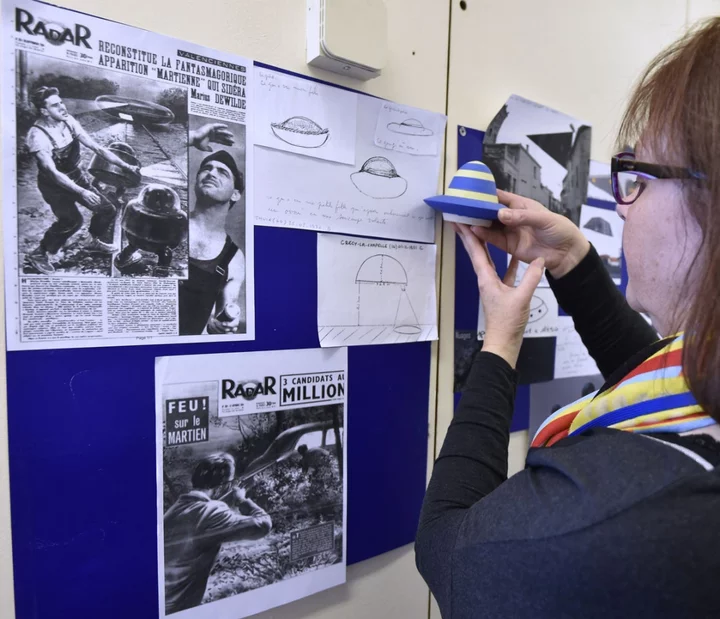
Nearly one in five American academics say they have seen a UFO – or know someone who has
About 20 per cent of US academic respondents in a survey have reported that they, or someone they know, have seen unidentified flying objects (UFOs). Over a third of the nearly 1,500 respondents are interested in conducting research into such unidentified aerial phenomena (UAP), suggested the results of the survey, published in the journal Humanities and Social Science Communications. The US government has undertaken new hearings, reports and investigations into UAP, with a report by the Pentagon suggesting there were over 500 reports about UFOs with the agency as of August 2022. In the current research, scientists, including those from the University of Louisville, surveyed 39,984 academics, including professors, associate professors and assistant professors from 144 US universities across 14 different disciplines. Despite the stigma associated with the topic, researchers said these developments merit asking university faculty about their perceptions on the sightings of UFOs. Researchers asked the 4 per cent of individuals who responded to the survey about their perceptions of, experiences with and opinions of UAP. Nearly a tenth of the participants worked in political science, another tenth in physics, 10 per cent in psychology and 6 per cent in engineering. About 276 of the respondents – or 19 per cent of participants – reported that they or someone they knew had witnessed UAP. A further 9 per cent said they or someone they knew “may have witnessed” UAP, according to the study. Thirty-nine percent of all the participants said they did not know what the most likely explanations for UAP were, but a fifth of them attributed the sightings to natural events and 13 per cent to devices of unknown intelligence. About 4 per cent of participants said they had conducted academic research related to UAP, and over a third said they had some degree of interest in conducting research in this area. Among the respondents, 37 per cent ranked the importance of further research into UAP as either “very important” or “absolutely essential”, while nearly two-thirds of them considered academia’s involvement in UAP-related research to be “very important or absolutely essential”. The findings hinted that many American academics across disciplines consider academia’s involvement in research into UAP to be important. “Results demonstrated that faculty think the academic evaluation of UAP information and more academic research on this topic is important,” scientists wrote in the study, adding that curiosity on the topic “outweighed scepticism or indifference”. Researchers also suggested many may be cautiously willing to engage with UFO research if others they consider to be reputable within their field also do so. However, they said more surveys among larger and diverse cohorts are needed to understand attitudes of academics towards UAP. Read More Some strange ‘highly manoeuvrable’ UFOs seem to defy laws of physics, scientists say UFOs, UAPs and ETs: Why some people believe aliens are visiting us right now Nearly 200 recent UFO sightings in US remain unexplained, Pentagon says Ancient galaxy discovered 25 million light years away Watch: Axiom Mission 2 arrives at the International Space Station Nearly 350 licences issued to UK space companies
2023-05-23 15:26

Myanmar media guide
An overview of the media in Myanmar, including links to broadcasters and newspapers.
2023-05-19 23:48
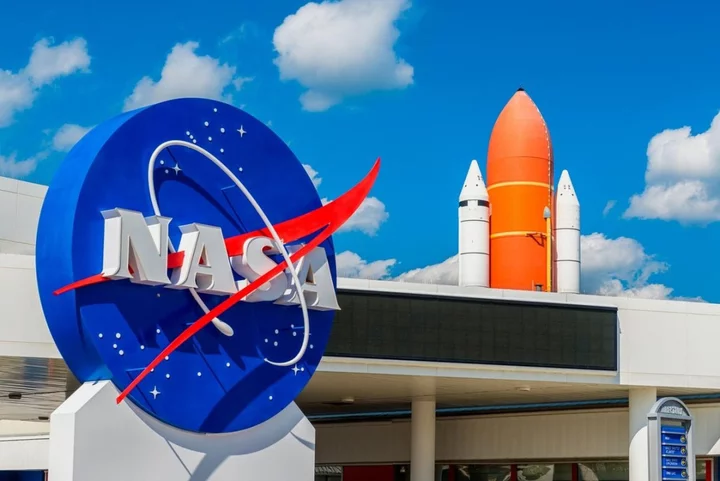
Nasa says Jeff Bezos will build moon lander for Artemis mission
Nasa has named Jeff Bezos’s Blue Origin as the second company to build a lunar lander under its Artemis program, which aims to return astronauts to the Moon for the firs time in more than 50 years. The US space agency awarded the first contract to Elon Musk’s SpaceX in 2021 in a $3 billion deal that was disputed by Mr Bezos at the time. Those initial missions using SpaceX’s Starship system are slated for later this decade. “We want more competition, we want two landers,” Nasa Administrator Bill Nelson said at an event in Washington on Friday. “It means you have reliability, you have backups. It benefits Nasa, it benefits the American people.” Today’s announcement evokes deja vu for Amazon.com founder Bezos and defense contractor Dynetics Inc, the head of a partnership with Northrop Grumman. Those companies lost out to SpaceX for the 2021 contract, part of an initial moon lander procurement program. Nasa under that program said it could pick up to two companies, but blamed budget constraints for only going with SpaceX. The new contract is the biggeset ever deal for Blue Origin, which Mr Bezos founded in 2000. The Amazon founder has invested billions of dollars into the company to compete for high-profile commercial and government space contracts with SpaceX. After losing in 2021, Blue Origin unsuccessfully fought to overturn Nasa’s decision to ignore its Blue Moon lander, first with a watchdog agency and then in court. Blue Origin and lawmakers had pressured Nasa to award a second lunar lander contract to promote commercial competition and ensure the agency has a backup ride to the moon. Nasa in early 2022 announced the program for a second lander contract. Nasa chief Bill Nelson said at the time: “I promised competition, so here it is.” Blue Origin has already named its corporate partners for the lunar lander: Lockheed Martin , Boeing, spacecraft software firm Draper, and robotics firm Astrobotic. Northrop Grumman, previously a key partner in Blue Origin’s unsuccessful Blue Moon bid in 2021, switched teams to join its former rival Dynetics. Nasa’s multi-spacecraft plan for the Artemis moonshots involves its Space Launch System rocket launching astronauts toward the moon aboard the Lockheed-built Orion capsule. That will dock in space with a lunar lander that will ferry the crew the rest of the way to the Moon’s surface. Additional reporting from agencies Read More ‘It’s becoming like an airport’: How SpaceX normalised rocket launches Watch live: Nasa reveals who will build second Artemis lunar lander Nasa Mars lander study reveals ‘main source of heat’ on Red Planet Saturn’s rings are no more than 400 million years old – study
2023-05-19 23:20
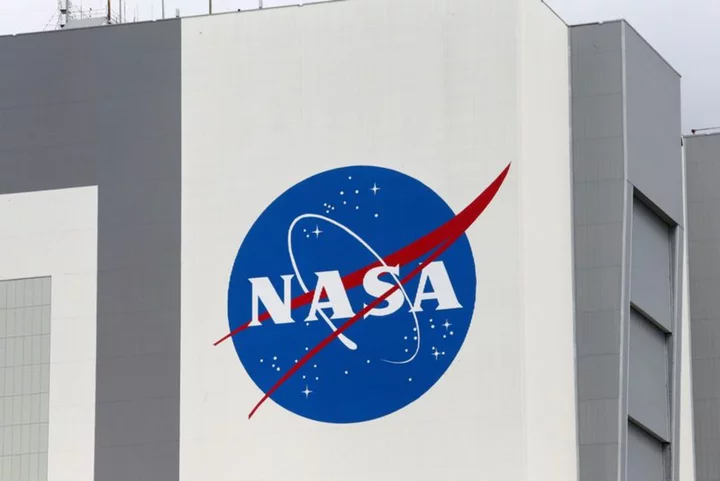
Jeff Bezos' Blue Origin wins NASA contract to build astronaut lunar lander
By Joey Roulette WASHINGTON (Reuters) -A team led by Jeff Bezos' space company Blue Origin won a coveted NASA contract
2023-05-19 22:45
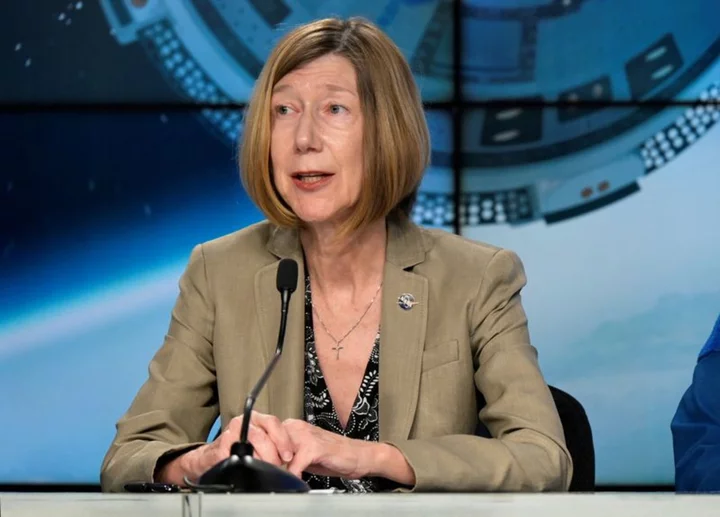
SpaceX hires former NASA human spaceflight chief for Starship role
By Joey Roulette WASHINGTON Elon Musk's SpaceX has tapped NASA's former human spaceflight boss Kathy Lueders to help
2023-05-16 02:26
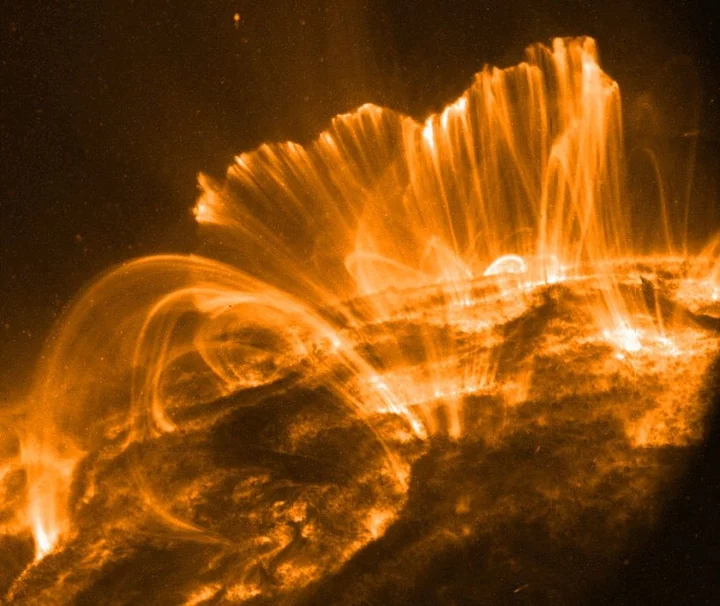
Nasa’s new AI gives ‘30 minutes of advance warning’ before killer solar superstorms strike Earth
Nasa has built an artificial intelligence model to predict where on Earth an impending solar storm would strike, a new system that scientists said can provide “30 minutes of advance warning”. The AI model analyses Nasa satellite data to raise the alarm on dangerous space weather, said researchers from the American space agency’s Goddard Space Center. The warning may provide just enough time for countries to prevent severe impacts of these storms on power grids and other critical infrastructure, according to the new study published recently in the journal Space Weather. Solar storms are caused when the Sun emits a burst of electrically charged plasma in what is called a coronal mass ejection. These charged particles create so-called geomagnetic storms that may cause blackouts and technological malfunctions of instruments on Earth as they interfere with the protective magnetic field around the planet. While these storms range from mild to extreme, their effects could become increasingly disruptive in a technologically dependent world. For instance, a solar storm in 1989 caused blackouts across Quebec, Canada for 12 hours, plunging millions into the dark and closing schools and businesses. Another popular solar superstorm event known as the Carrington Event sparked fires at early telegraph stations in 1859 that prevented messages from being sent. Scientists warned that the risk of such a devastating solar storm is increasing as we approach the next “solar maximum” – a peak in the Sun’s 11-year activity cycle. To prevent such a devastation, Nasa scientists developed the new AI model to identify links between solar wind measurements from previous Sun missions and geomagnetic disturbances observed at ground stations across Earth. The computer model they developed, called DAGGER, can quickly and accurately predict geomagnetic disturbances worldwide, “30 minutes before they occur,” researchers said. When they tested the model against two geomagnetic storms that happened in August 2011 and March 2015, it was able to “quickly and accurately” forecast the storm’s impacts around the world. The new prediction system is the first to combine swift analysis of AI, with real measurements from space and across Earth to generate frequently updated predictions. Scientists believe the early warning provided by the system can help take action to protect infrastructure from an impending solar storm, such as temporarily taking sensitive systems offline or moving satellites to different orbits. Read More Stunning aurora lights up skies over Australia: ‘Brightest one I’ve ever seen’ How a severe solar storm could leave a lasting impact on our world The world is not yet ready to overcome a once-in-a-century solar superstorm, warn scientists Astronomers find ‘objects that no one has ever seen before’ Saturn’s rings are no more than 400 million years old – study Strange sounds recorded by balloons in stratosphere leave scientists puzzled
2023-05-15 13:21
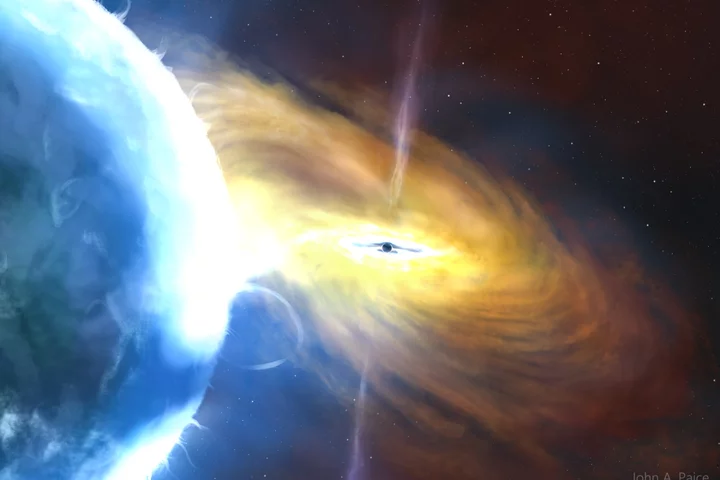
Biggest explosion ever seen spotted in space – and scientists don’t know what it is
The biggest explosion ever seen has been spotted in space – and scientists don’t know for sure where it came from. The blast was brighter than almost anything ever seen and has been going on for years, making it by far the most powerful such event witnessed by scientists. It has been ongoing for more than three years, and took place nearly 8 billion years away. Astronomers have proposed a host of possible explanations for the blast: it may be a vast cloud of gas that was torn apart by a black hole, for instance. But nothing on such a scale has ever been seen before and the explosion may have come from something else entirely. It is more than 10 times brighter than any known supernova and three times brighter than the brightest tidal disruption event, where a star falls into a supermassive black hole. The explosion, known as AT2021lwx, took place when the universe was around six billion years old, and is still being detected by a network of telescopes. The astronomers, led by the University of Southampton, believe the explosion is a result of a vast cloud of gas, possibly thousands of times larger than our sun, that has been violently disrupted by a supermassive black hole. Fragments of the cloud would be swallowed up, sending shockwaves through its remnants, as well as into a large dusty “doughnut” surrounding the black hole. Such events are very rare and nothing on this scale has been witnessed before, the researchers say. Last year, astronomers witnessed the brightest explosion on record – a gamma-ray burst known as GRB 221009A. Although this was brighter than AT2021lwx, it lasted for just a fraction of the time, meaning the overall energy released by the AT2021lwx explosion was far greater. AT2021lwx was first detected in 2020 by the Zwicky Transient Facility in California, and subsequently picked up by the Asteroid Terrestrial-impact Last Alert System (ATLAS) based in Hawaii. But until now the scale of the explosion had been unknown. Dr Philip Wiseman, research fellow at the University of Southampton, who led the research, said: “We came upon this by chance, as it was flagged by our search algorithm when we were searching for a type of supernova. “Most supernovae and tidal disruption events only last for a couple of months before fading away. For something to be bright for two plus years was immediately very unusual.” The Southampton-led team believe the most feasible explanation for what caused the explosion is an extremely large cloud of gas (mostly hydrogen) or dust that has come off course from its orbit around the black hole and been sent flying in. Dr Wiseman added: “With new facilities, like the Vera Rubin Observatory’s Legacy Survey of Space and Time, coming online in the next few years, we are hoping to discover more events like this and learn more about them. “It could be that these events, although extremely rare, are so energetic that they are key processes to how the centres of galaxies change over time.” The findings are published in Monthly Notices of the Royal Astronomical Society. Additional reporting by agencies Read More Scientists think they have explained a ‘mysterious structure in the universe’ Astronomers spot the largest cosmic explosion ever seen Astronomers see ‘objects that no one has ever seen before’ in incredible observations Astronomers spot the largest cosmic explosion ever seen Astronomers see ‘objects that no one has ever seen before’ in incredible observations ‘Meteorite? shooting star? missile?’: Officials explain strange ‘fireball’ over Japan
2023-05-12 08:50

Analysis-Liftoff: Modi's space push for India counts on private players
By Nivedita Bhattacharjee BENGALURU Encouraged by high-profile successes elsewhere, India wants its private space companies to increase their
2023-05-11 22:22
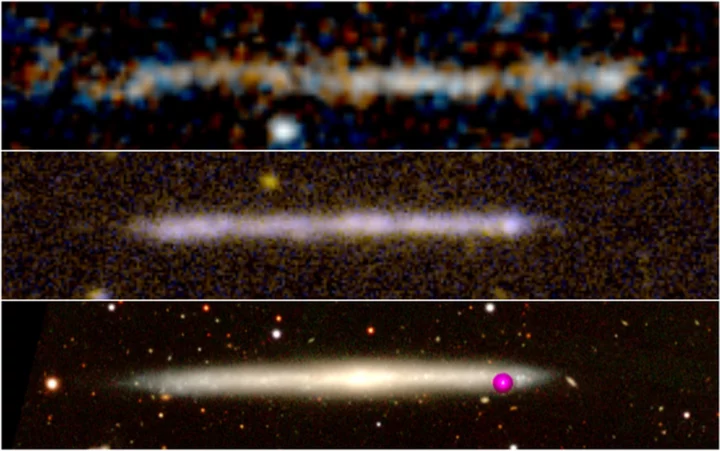
‘Runaway supermassive black hole’ mystery solved: Scientists find new explanation for unusual star structure
Scientists think they have found an explanation for what scientists thought was a “runaway” black hole speeding through the universe. Last month, scientists reported that they had seen what appeared to be an object unlike anything seen before. What originally appeared to be scratches on Hubble images was actually a black hole that had been thrown out from its home galaxy and was now speeding through the cosmos, scientists said. Astronomers had come to that conclusion after spotting a long trail of stars, formed 8 billion years ago. It was a stretched out, narrow shape, roughly the same size as our own Milky Way. Last month’s study suggested that those stars were the wake left behind from that runaway black hole. As the black hole travelled through a gas cloud, it left behind the right conditions to start forming stars, that study suggested. It was shock and a breakthrough for a number of reasons: it was unprecedented, and required a number of different conditions for it to be true. That led astronomers both to celebrate and question the theory, and in the time since other researchers have been working on their own ideas. Now scientists at the Instituto de Astrofísica de Canarias (IAC) have suggested their own, more ordinary explanation of the unusual, long star structure. They suggest that it is in fact just a flat or thin galaxy – one without a bulge that makes it wider – that is being seen from its side. “The motions, the size, and the quantity of stars fits what has been seen in galaxies within the local universe,” said Jorge Sanchez Almeida, an IAC researcher who is the first author of the article, in a statement. “It’s a relief to have found the solution to this mystery, the new proposed scenario is much simpler. In one sense it is also a pity, because the existence of fleeing black holes is expected, and this could have been the first one to be observed.” The team compared the mystery structure with another, much better known galaxy, named IC5249. That is near to us, has a similar mass of stars, and doesn’t have a galaxy either. They found that it was surprisingly similar. The stars were moving in similar ways to those found in closer, comparative galaxies, researchers said. That led scientists working on the new paper to suggest that it is a relatively normal and expected galaxy, rather than an out-of-control black hole. But they hope that further observations will shed further light on what exactly it is doing – and could still allow the galaxy to prove of interest to astronomers. “We also looked at the relation between the mass of the assumed galaxy and its maximum velocity of rotation, and discovered that indeed it is a galaxy which behaves like a galaxy,” said Ignacio Trujillo, an IAC researcher who worked on the study. “It is an interesting object, because it is quite a large galaxy at a very large distance from Earth, where the majority of the galaxies are smaller.” The proposal is reported in a paper, ‘Supermassive black hole wake or bulgeless edge-on galaxy?’, published in the journal Astronomy and Astrophysics. Read More Aliens may intercept human communication ‘within next 100 years’, study says Powerful auroras likely this week due to rare ‘backward’ sunspot Meteorite crashes through roof of New Jersey home Aliens may intercept human communication ‘within next 100 years’, study says Powerful auroras likely this week due to rare ‘backward’ sunspot Meteorite crashes through roof of New Jersey home
2023-05-10 21:45
